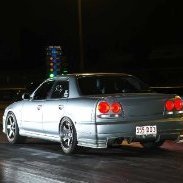Actuator Thing Touching Jjr Dump Pipe
Announcements
-
Similar Content
-
Latest Posts
-
I don't. I mean, mine's not a GTR, but it is a 32 with a lot of GTR stuff on it. But regardless, I typically buy from local suppliers. Getting stuff from Japan is seldom worth the pain. Buying from RHDJapan usually ends up in the final total of your basket being about double what you thought it would be, after all the bullshit fees and such are added on.
-
The hydrocarbon component of E10 can be shittier, and is in fact, shittier, than that used in normal 91RON fuel. That's because the octane boost provided by the ethanol allows them to use stuff that doesn't make the grade without the help. The 1c/L saving typically available on E10 is going to be massively overridden by the increased consumption caused by the ethanol and the crappier HC (ie the HCs will be less dense, meaning that there will definitely be less energy per unit volume than for more dense HCs). That is one of the reasons why P98 will return better fuel consumption than 91 does, even with the ignition timing completely fixed. There is more energy per unit volume because the HCs used in 98 are higher density than in the lawnmower fuel.
-
No, I'd suggest that that is the checklist for pneumatic/hydraulic adjustable systems. I would say, based on my years of reading and complying with Australian Standards and similar regulations, that the narrow interpretation of Clause 3.2 b would be the preferred/expected/intended one, by the author, and those using the standard. Wishful thinking need not apply.
-
By soviet_merlin · Posted
Hmmm, interesting. Makes me wonder whether there is bias as well. It's the cheapest fuel, so it is used for all kinds of ill-maintained shitboxes which are bound to have issues regardless. Nicer cars tend to require higher octane rated fuel and can't use it anyway. FWIW, the official NSW E10 facts page is decent.
-





Recommended Posts
Create an account or sign in to comment
You need to be a member in order to leave a comment
Create an account
Sign up for a new account in our community. It's easy!
Register a new accountSign in
Already have an account? Sign in here.
Sign In Now